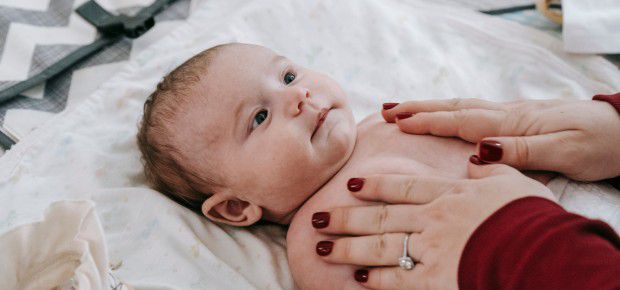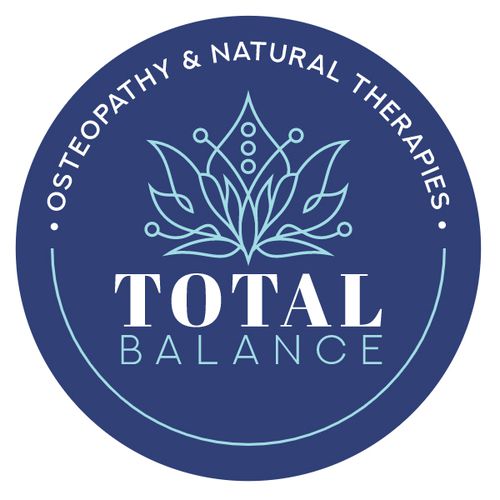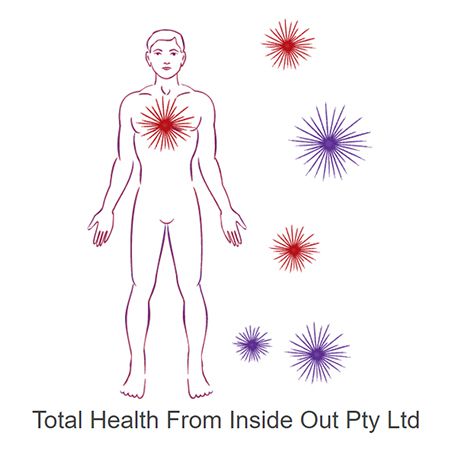
Craniosacral therapy for babies is a gentle form of bodywork that some Australian parents explore to support their baby’s comfort, sleep, or feeding. It uses light touch, typically no heavier than the weight of a coin, to release tension around the head, spine, and sacrum. This touch is applied with the goal of improving the flow of cerebrospinal fluid, which surrounds and protects the brain and spinal cord.
The therapy is based on the idea that tension or compression in a baby’s cranial bones or nervous system may affect their overall wellbeing. These restrictions are thought to sometimes result from birth processes, especially during long labours, instrument-assisted deliveries, or caesarean births.
By gently working with the craniosacral system, practitioners aim to ease discomfort and support the baby’s natural ability to self-regulate. While it is not a replacement for medical care, some parents find it helpful as a complementary therapy to promote calmness and ease in their infants.
Why some parents turn to it for babies
Many Australian parents seek craniosacral therapy for babies as a natural and gentle option when their infant shows signs of discomfort that do not always have a clear medical cause. Though research is still developing, this therapy is often chosen as a complementary approach when looking to ease early-life challenges such as:
-
Colic or excessive crying: Some babies cry for hours at a time despite being well-fed and changed. Craniosacral therapy is believed to support nervous system regulation, which may help reduce these symptoms.
-
Reflux or digestive discomfort: Parents of babies with silent reflux or frequent spitting up sometimes explore craniosacral work as a way to ease abdominal tension and improve digestion.
-
Unsettled sleep or poor feeding: Gentle cranial work may help relax the baby’s system, supporting better latch during breastfeeding or deeper sleep patterns.
-
After a difficult birth: Long labour, forceps or vacuum delivery, or caesarean sections can sometimes result in physical stress or tightness. Practitioners often aim to relieve these tensions to support natural healing.
-
A gentle, non-invasive approach: For parents who prefer to avoid medication or more clinical treatments, the light-touch nature of this therapy is appealing.
For many families, it offers a calming experience that may support bonding, soothe the baby’s nervous system, and promote more settled behaviour overall.
Considering craniosacral therapy for your baby? Find certified craniosacral therapists near you on Natural Therapy Pages.
What happens in a baby craniosacral session?
For parents trying craniosacral therapy for the first time, knowing what to expect during a session can ease any uncertainty. Sessions are usually quiet, relaxed, and baby-led, meaning the practitioner follows the infant’s cues closely.
Here’s a general overview of how a session may unfold:
|
Aspect |
What to expect |
|
Setting |
Calm, softly lit space with a massage table or padded mat. Some sessions may take place with baby in the parent's arms or on a blanket on the floor. |
|
Positioning |
Babies may lie on their back, side, or even be held by the parent. The position depends on the baby's comfort. |
|
Duration |
Most sessions last 30 to 45 minutes, though the therapist may adjust based on how the baby responds. |
|
Parental Involvement |
Parents are usually present throughout. Some practitioners may involve them in gentle holding or soothing. |
|
Techniques Used |
Very light touch is applied to areas like the skull, spine, sacrum, and abdomen. Practitioners may pause frequently to observe shifts or responses. |
|
Typical Reactions After |
Babies often show signs of deep relaxation. They may become drowsy, feed well, or sleep soundly afterward. Occasionally, they may be unsettled briefly before settling. |
Sessions are always guided by the baby’s comfort. If the infant becomes distressed or needs a break, the therapist will pause or end the session early. No forceful movements or adjustments are used, making it a gentle and non-invasive experience.
Curious about how craniosacral therapy has evolved? Learn more about the principles behind biodynamic craniosacral therapy and how it differs from traditional approaches.
What does the research say?
While many families in Australia turn to craniosacral therapy hoping to ease colic, reflux, or sleep issues, the scientific community remains cautious. Most published research highlights the need for better-designed trials to confirm its effectiveness. Still, some small studies suggest it may offer gentle support in specific cases.
Here’s what the current research shows:
1. Mixed results and serious flaws in paediatric trials
A 2023 systematic review evaluated the effects of craniosacral therapy across different age groups, including children.
-
The review found no strong clinical evidence supporting its use for either musculoskeletal or non-musculoskeletal issues.
-
Although two randomised trials involving children suggested statistically significant improvements, both were seriously flawed in design.
-
The authors concluded that the positive results were likely false positives.
2. Possible improvement in colic and feeding patterns
A small 2019 observational study looked at infants experiencing colic and other early-life challenges.
-
Parents reported less crying, better sleep, and improved feeding after craniosacral sessions.
-
The study, however, did not include a control group, limiting the strength of its conclusions.
-
Outcomes were subjective and parent-reported, not clinically measured.
3. Encouraging results in reducing fussiness and improving sleep
A 2022 review suggested craniosacral therapy may help soothe infants and support sleep regulation.
-
Results indicated reduced crying and better settling behaviour.
-
Authors noted it could serve as a complementary option but stressed the need for rigorous, controlled trials to validate any claims.
Despite mixed findings, craniosacral therapy is considered low risk when performed by a qualified professional. It should never replace medical assessment or treatment. Parents are encouraged to speak with their GP or maternal child health nurse before booking a session.
Is craniosacral therapy safe for babies?
Craniosacral therapy is generally considered a safe and non-invasive option for babies when performed by a properly trained practitioner. Its techniques involve extremely light touch and no forceful manipulation, making it suitable even for newborns. However, as with any therapy, safety depends on the experience and qualifications of the person providing it.
Here’s what parents in Australia should keep in mind:
-
The therapy is gentle by design: Touch is typically no deeper than a few grams of pressure. There are no sudden movements or adjustments, and sessions are paced to follow the baby’s cues and comfort.
-
Choose a therapist with infant experience: Practitioners do not need to be medically trained, but it’s important to find someone who has worked with babies and understands paediatric anatomy and development. Ask whether they have completed additional training specific to infants.
-
Be cautious if your baby is unwell: Craniosacral therapy should not be used on babies with fever, acute infections, or undiagnosed symptoms unless cleared by a medical professional. It is not a replacement for medical evaluation.
-
Not all therapists are AHPRA-registered: Many craniosacral therapists are bodyworkers or alternative health professionals who are not governed by AHPRA. Always check for professional association memberships, client reviews, and relevant certifications.
When chosen carefully, this therapy may be a gentle way to support a baby’s comfort and wellbeing, but it should always be part of a broader, informed approach to infant health.
Ready to book a session? Search trusted craniosacral therapists near you.
What to look for in an infant therapist in Australia
Because craniosacral therapy is not a regulated medical profession in Australia, choosing a qualified and experienced therapist is key, especially when it comes to treating babies. Not every practitioner has training in infant care, so asking the right questions can make all the difference.
Here are some things to look for when choosing a therapist:
1. Do they have specific experience with babies?
Ask how many infants they’ve worked with and whether they’ve received hands-on paediatric training. Infant anatomy, behaviour, and needs differ greatly from adults, so experience truly matters.
2. What type of qualifications do they hold?
While they may not be AHPRA-registered, many therapists come from backgrounds in massage, osteopathy, or other bodywork disciplines. Look for formal training in craniosacral therapy and any advanced courses related to infants.
3. Are they a member of a recognised association?
Organisations like the Craniosacral Therapy Association of Australia may help ensure a baseline level of professionalism and ongoing education. Membership is not mandatory, but it can offer added reassurance.
4. How do they approach safety and communication?
A good therapist will welcome questions, be transparent about their scope of practice, and work alongside your existing healthcare providers if needed.
Taking a few minutes to ask these questions can help you find someone who is not only skilled, but also aligned with your values around safety and gentle care.
Interested in becoming a practitioner? Explore what’s involved in studying craniosacral therapy and how to get started in Australia.
Wrapping up
Craniosacral therapy offers a gentle, non-invasive option that some Australian families explore to support their baby’s comfort and regulation. While research is still evolving, parent-reported outcomes often highlight improvements in sleep, feeding, and general settledness after sessions.
It’s important to approach this therapy with realistic expectations. It is not a substitute for medical care, and results may vary from baby to baby. For families seeking a calming, touch-based therapy to complement other forms of care, craniosacral work may provide a helpful layer of support.
As with any treatment choice, informed decision-making is key. Take the time to research practitioners, ask about their training and experience with infants, and check that they prioritise safety and communication.
When used thoughtfully and alongside guidance from your child’s healthcare team, craniosacral therapy may play a gentle, supportive role in your baby’s early wellbeing.
Originally published on Jun 06, 2025








